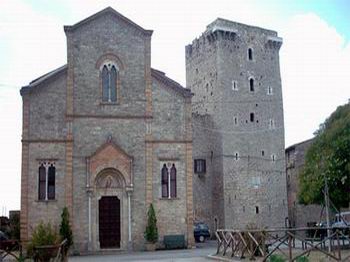Todi's country
Grutti
Built in the 11th century with the name of Grottombra, in 1126 Ghibelline lords erected a circle of solid walls around it. In 1347 it was considered a "villa" and had 16 families. Its name was later changed to "Grutti" because of the many travertine caves (grotte) found there underground, used by early Christians, followers of St. Terenziano, as hiding places. Nearby there is an old abbey with the Romanesque church of Santa Maria di Agello, built previous to the castle. This place was very dear to Angelo Cesi, bishop of Todi, who had restoration work done on the castle. A few towers of the medieval structure are still standing today, rising over large sections of the walls. The houses of the old castle are used as storehouses and cellars.

Grutti
Sorse nel XI sec. con il nome di Grottombra , nel 1126 venne cinto da solide mura da signori ghibellini. Nel 1347 era considerato "villa" e contava 16 famiglie. Prese in seguito i nome "Grutti" per le numerose grotte di travertino presenti nel sottosuolo, dove si erano rifugiati i primi cristiani, seguaci di S. Terenziano. Nelle vicinanze sorge l’antica abbazia con chiesa romanica di S. Maria di Agello, costruita anteriormente al castello. Il luogo fu molto caro ad Angelo Cesi, vescovo di Todi, che vi fece eseguire alcuni interventi di restauro. Della struttura medievale oggi restano in piedi alcuni torrioni che sovrastano ampi tratti di mura. Le abitazioni dell’antico castello sono adibite a magazzini e cantine.